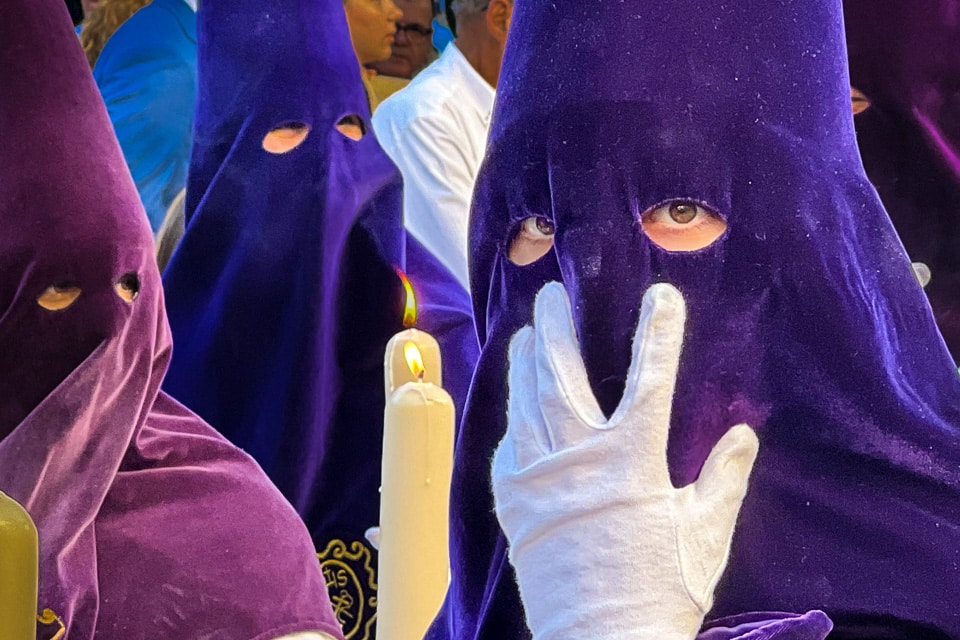
The first thing to know about the traditional cultural festivals of Spain is that the Spanish never do anything half-heartedly. The sound and spectacle of almost any Spanish festival is on a scale rarely seen anywhere else in the world.
Table of Contents
Also keep in mind, that the Spanish haven't created these fiestas in order to attract tourists. They are unique to the community where they happen, and usually have been around for centuries before tourism was invented. In fact, at one major festival – Sevilla's Feria de Abril (April Fair) – the attractive little casetas where the Sevillanos gather – are closed to tourists, unless you happen to know a local who will offer you an invitation.
With only a couple of exceptions, the Spanish traditional festivals don't allow actual participation by outsiders. However, they do offer visitors incredible spectacles and a window into rich cultural heritage of the various Spanish communities.
That said, here are a dozen of the best Spanish festivals (with their 2025 dates) that prioritize stunning visuals and performances over participation.
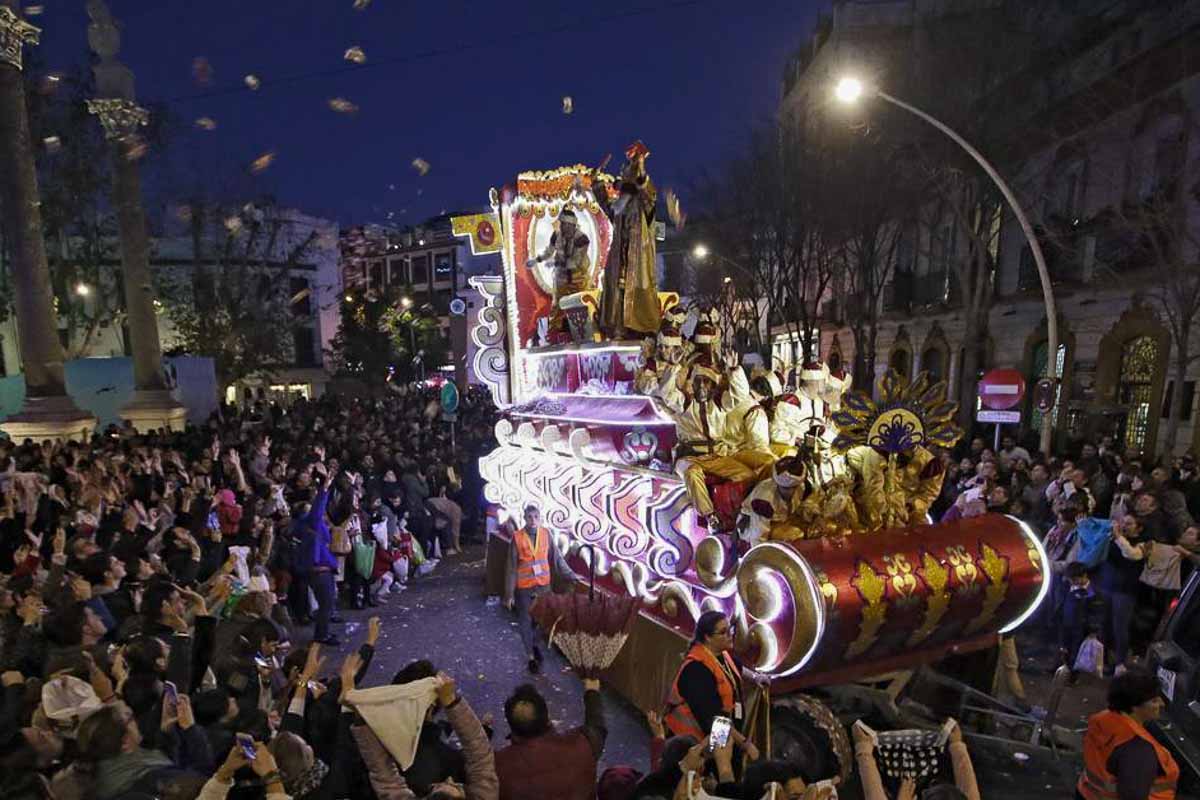
Fiesta de los Reyes (Three Kings Day)
Everywhere
January 6, 2025
In Spain, January 6, or the twelfth day of Christmas, is really the heart of the Christmas season's celebration. Also known as Epiphany or Day of the Magi (Reyes Magos), Three Kings Day marks the arrival of the three kings bearing gifts for the infant child. The festivities are all about gifts and candy for children.
The typical celebration starts with a procession on the evening of January 5, comprised of the three kings entering the town and tossing candy to the excited children lining the street. The Kings ride in on camels or brightly decorated floats, and are surrounded by dancers, music, and glittery decorations.
It's a beautiful night of lights and good cheer. The following day, like Christmas Day, is generally devoted to big family dinners and more gifts.
For more on Spain's Christmastide events, read our post, Christmas Traditions in Spain.
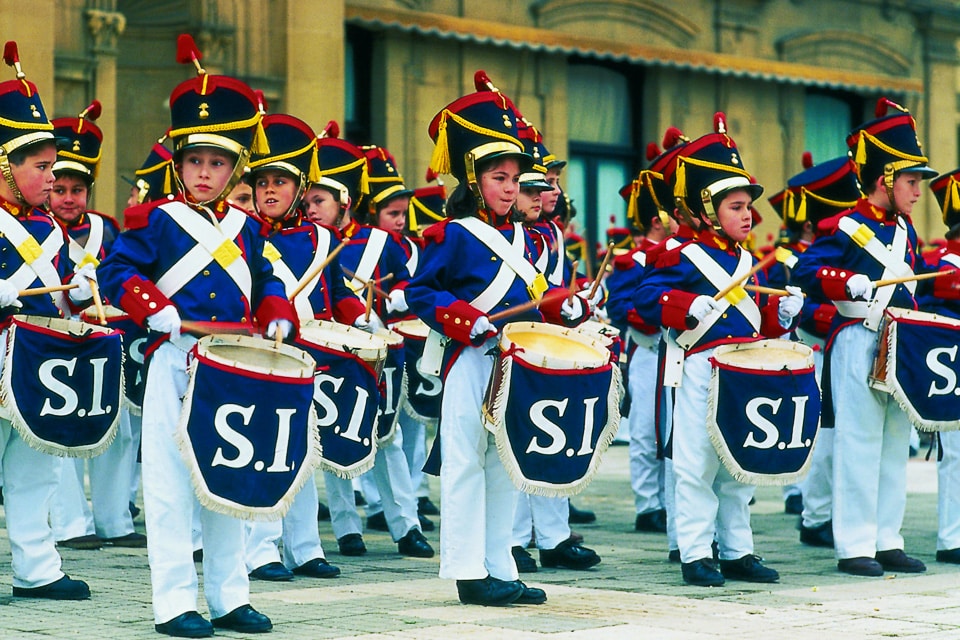
La Tamborrada (Drum Festival)
San Sebastián
January 19-20, 2025
This traditional festival honoring Saint Sebastian, the city's patron, is a rhythmic marvel, where 24 hours of continuous drumming echo through the city. Locals dressed as soldiers and cooks perform parades that are as much about spectacle as they are about tradition. The midnight flag-raising ceremony is a highlight.
Events kick off at 12 o'clock midnight on the 19th in the Plaza de la Constitución, when the city flag is raised. The drumming opens with the Sociedad Gaztelubide and representatives of other drum outfits who play throughout the following 24 hours.
The event began in 1836 as part of the local carnival. Originally, the companies dressed as soldiers of the era. As the number of participants in the Tamborrada increased, other companies with different uniforms started to appear. On January 20 it is almost impossible not to come across at least one Tamborrada in the streets of San Sebastián. More than 147 companies of drummers and brass bands fill the streets with their tunes and dances.
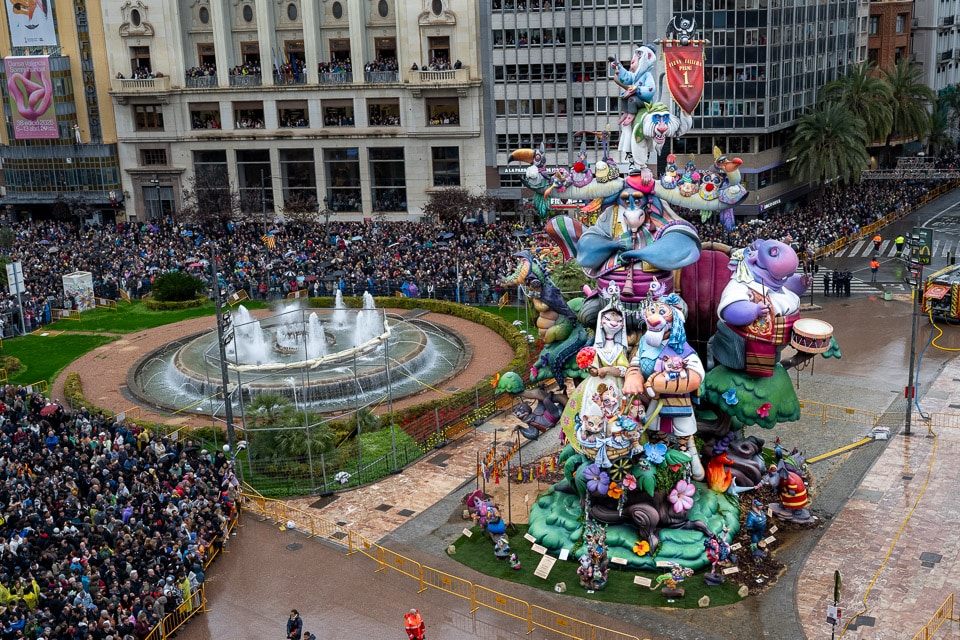
Las Fallas
Valencia
March 15-19, 2025
The Fallas Festival in Valencia is an explosion of creativity, fire, and tradition, celebrated annually from March 15 to 19. The festival is rooted in ancient customs and began as a spring cleaning ritual by local carpenters. They would burn wooden structures, called “parots,” used to hold candles during winter. Over time, these simple bonfires evolved into intricate and artistic effigies, called fallas, often satirizing current events, politics, or popular culture.
The festival officially starts with the La Crida, a ceremonial call to the city to celebrate. A key event is the Plantà on March 15, when the fallas are erected across the city. These monumental sculptures, made of wood, papier-mâché, and other materials, showcase the craftsmanship of local artisans. On March 17 and 18, the Ofrenda de Flores honors the Virgin Mary, as locals in traditional dress bring elaborate flower arrangements to construct a floral tapestry. The festival culminates with the huge bonfires on La Cremà (March 19), when all but one falla (the winner) are spectacularly set ablaze.
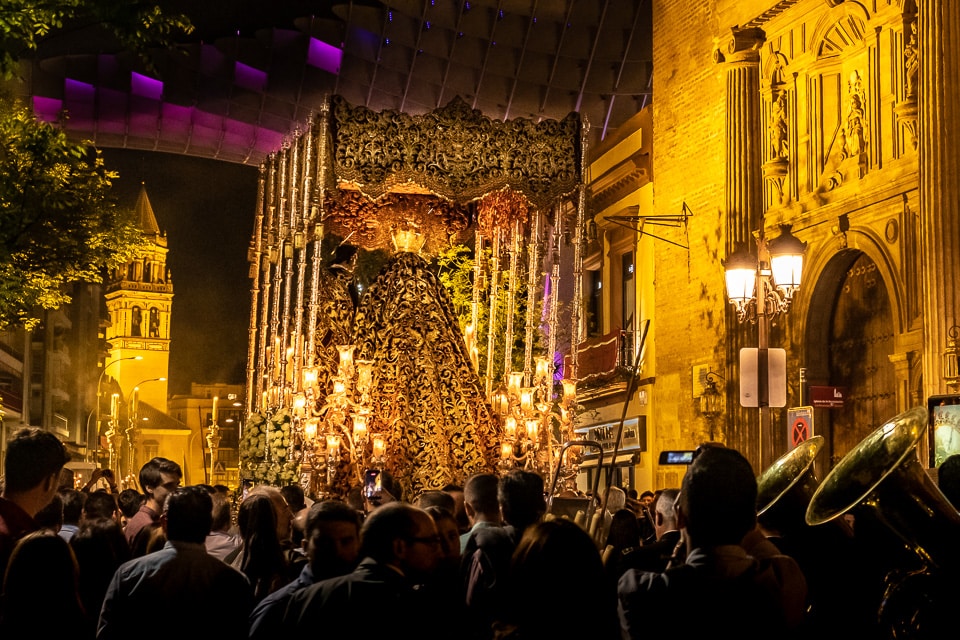
La Semana Santa (Holy Week)
Seville
April 13-20, 2025
The religious festival of Semana Santa – the week leading up to Easter – is celebrated all over Spain. But the week-long celebration of Semana Santa in Seville is regarded as the one of Spain’s most iconic festivals. Ornate floats called pasos depicting scenes from the passion of Jesus or venerable images of the Virgin Mary are carried through the streets by teams from each parish guild. The floats are always accompanied by haunting music and solemn processions of “penetents” dressed in distinctive robes and pointed hats.. The atmosphere is both moving and visually stunning. Each parish will usually have at least two floats, which may process on different days, and make their way slowly on 8 to 10-hour tours through the tiny winding streets of ancient Seville to end up at the Cathedral. The processions often pretty much bring traffic to a halt, so don't plan on getting anywhere in a hurry.
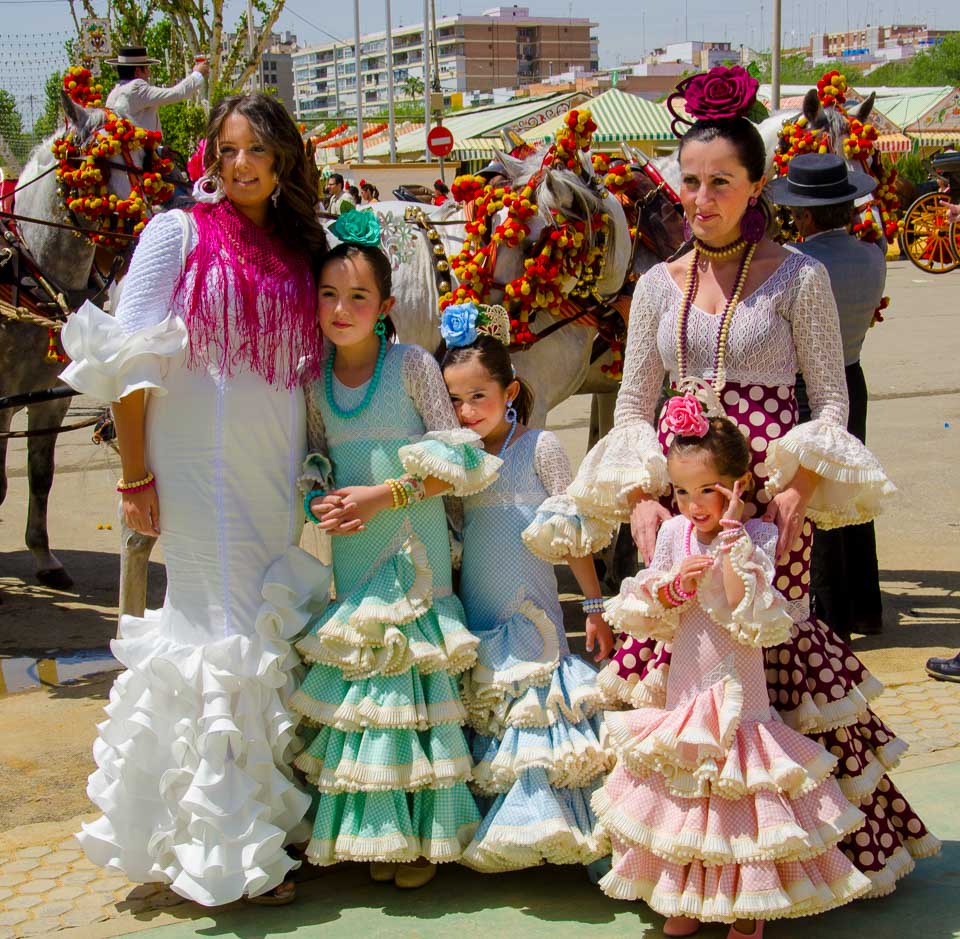
La Feria de Abril (April Fair)
Seville
May 4-11, 2025
The Feria de Abril is, as the name suggests, usually held in April. But, it sometimes moves into early May when Easter Sunday falls later in April. The Feria dates back to 1846 when it was originally organized as a livestock fair.
Today, the Fair showcases Seville’s flamboyant secular culture and visitors can marvel at the vibrant flamenco dresses, horse-drawn carriages, and intricately decorated casetas. For the duration of the fair, the fairgrounds and a vast area on the far bank of the Guadalquivir River are covered in rows of casetas (individual decorated tents which are temporarily built on the fairground). These casetas usually belong to prominent families of Seville, groups of friends, clubs, trade associations and political parties, and are open by invitation only. There are a few casetas, however, that are open to the public.
Each day the fiesta begins with the parade of carriages and riders at midday, carrying Seville's leading citizens to the city's bullring, La Real Maestranza. The Fair also serves as the opening of the bullfighting season in Seville.
During the day, the Feria is a family affair. Children can enjoy amusement park-style rides and families take leisurely meals inside their casetas. At night, however, the event turns into, shall we say, a more adult affair, with parties and alcohol flowing long into the night.
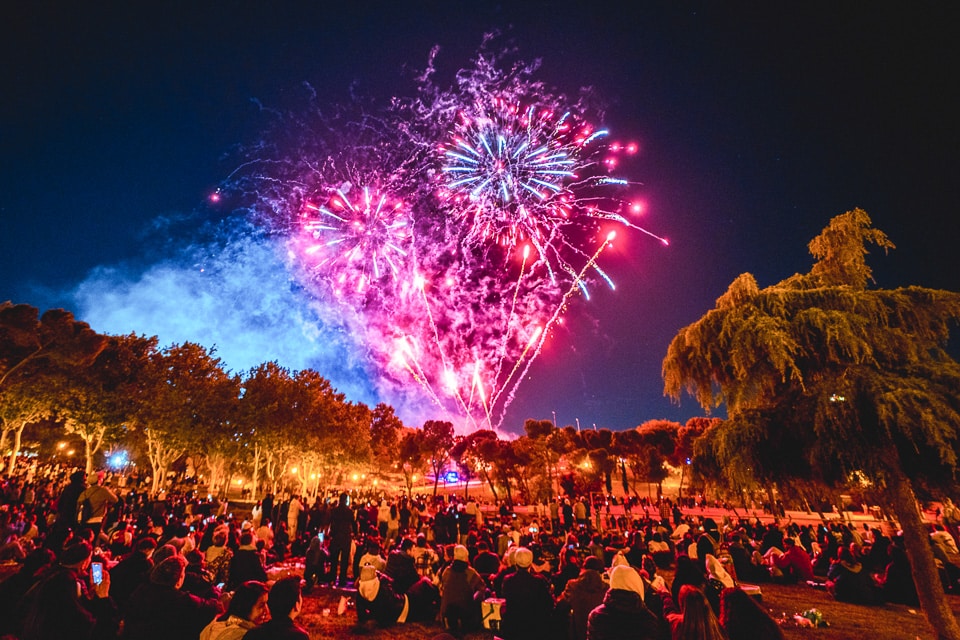
Festival of San Isidro Labrador
Madrid
On and around May 15, 2025
Every year on and around May 15, Madrid honors its patron saint, San Isidro Labrador, with concerts, shows and a range of activities for all ages. The week-long festivities that see Madrileños dress up and dance chotis in the streets and enjoy picnics with friends and family in the Pradera de San Isidro Park.
Saint Isidore the Laborer, who was born and died in the Spanish capital, was believed to have a special ability for finding water. One of the festival's biggest traditions sees chulapos and chulapas (Madrileños dressed in traditional costumes) drinking water from the spring next to the Chapel of San Isidro. Another tradition that lives on to this day is attending the Romería outdoor celebration in San Isidro Park.
Traditional fare enjoyed during San Isidro include limonada (a drink made with wine, lemon, sugar and chopped fruit, usually apple) and rosquillas – doughnuts that come in different shapes and sizes: listas (“smart”, or glazed), tontas (“dumb”, or plain), de Santa Clara (covered in dry meringue) or francesas (with almonds).
Free activities for the whole family are hosted in emblematic places such as Plaza Mayor, Las Vistillas Gardens and Pradera de San Isidro Park. Events include the Giants and Big Heads parade, chotis dancing and live music.
See our post on What to do in Madrid.
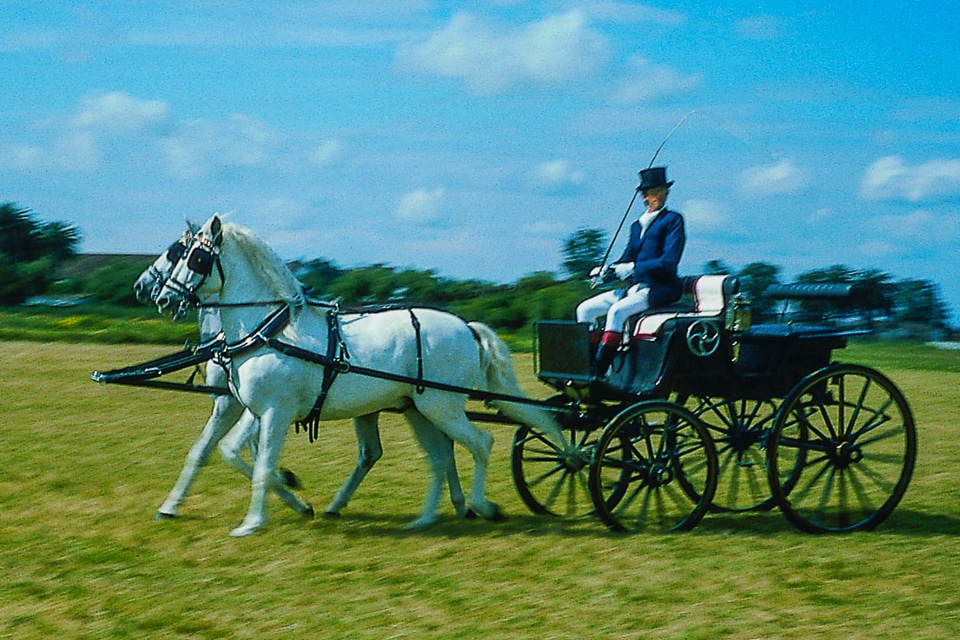
Feria de Jerez/Feria del Caballo (Horse Fair)
Jerez de la Frontera
May 17-24, 2025
The city of Jerez de la Frontera is known for many things, not the least of which is sherry (literally the English name for Jerez). But it's the Horse Fair that turns heads; the culture around horses in Spain runs deep.
Held the second week of May, the annual event dates to medieval times and the annual horse trading markets. Today, there are plenty of equine events, including horse parades, but also a wonderful carnival-like atmosphere that brings everyone together over food and fun. The fairgrounds are lined with pop-up bars and restaurants, and casetas. Unlike the Feria in Seville, however, the casetas at the Feria del Caballo are open to the public.
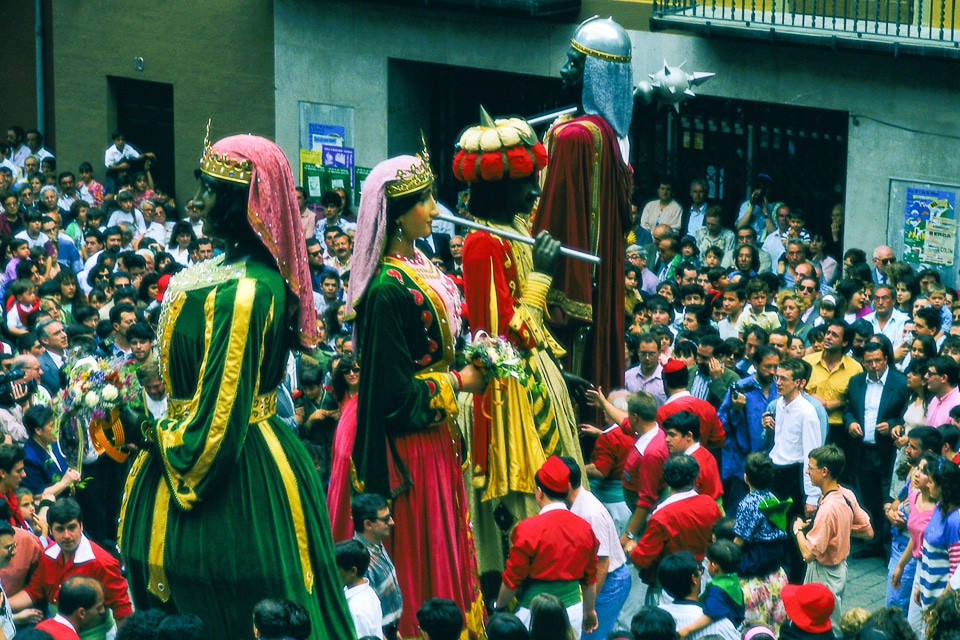
La Patum de Berga
Berga (near Barcelona)
June 18-22, 2025
This UNESCO-recognized annual festival features awe-inspiring parades with mythical figures, including fire-spitting beasts. The fiesta coincides with Corpus Christi and includes a series of theatrical representations, characters and figures. It is a religious commemoration that dates back to the Middle Ages and has managed to preserve both its religious and secular history.
La Patum includes street entertainment and shows with different figures typical of these fiestas such as giants, “big-heads”, eagles, guitas (dragons), and plens (devils). Fire and dance play a central role. The fiesta really gets underway on the Thursday of Corpus Christi, with the Ceremonial Patum. The salto de plens is the apotheosis of the fiesta. It represents an infernal orgy where fire devils jump to the rhythm of music. The following day is the Children’s Patum.
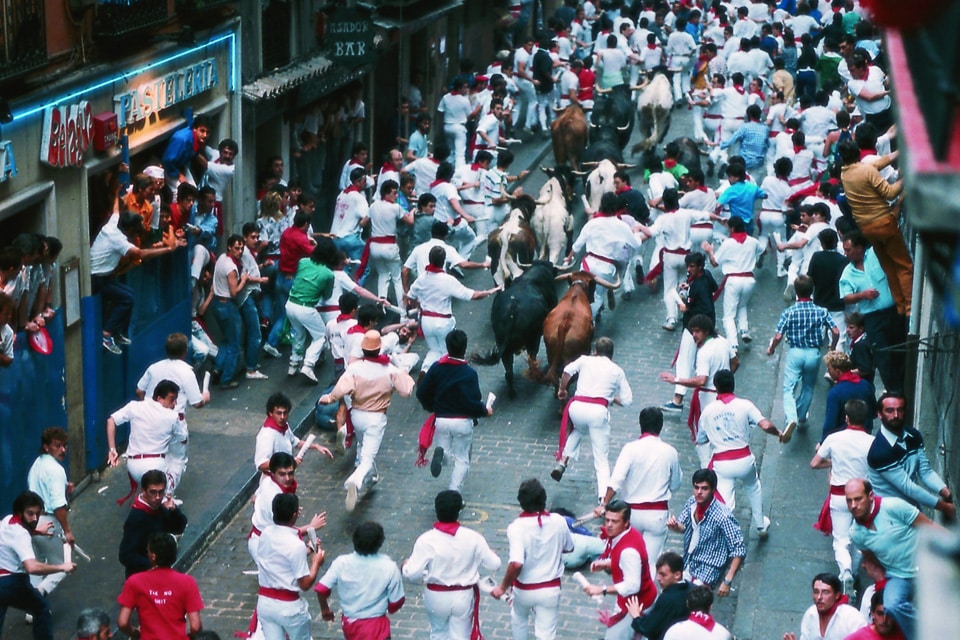
San Fermín (Running of the Bulls)
Pamplona
July 6-14, 2025
Pamplona's festival of the city's patron saint, San Fermín and the famous event of the running of the bulls was originally made famous by Ernest Hemingway's 1926 novel, The Sun Also Rises. The bull runs are still the main draw, but visitors can also enjoy vibrant parades, traditional dances, and nightly fireworks. The ceremonial atmosphere of the opening and closing events adds to the spectacle.
Visiting the San Fermín festival requires planning to ensure a memorable experience. Begin by securing accommodations well in advance, as hotels and hostels fill up quickly. Many visitors opt for nearby towns if Pamplona’s options are fully booked. The festival officially starts on July 6 with the “Chupinazo,” a raucous celebration in front of City Hall. Arrive early to witness this lively kickoff.
For the iconic encierro (running of the bulls,) held each morning from July 7 to 14, arrive by 6 a.m. or even earlier to secure a good viewing spot along the route. If you have deep pockets, consider booking a balcony spot for an elevated and safer view. (A room overlooking the bull run can run you up to $2000 per night.) If you are thinking of actually participating in the run, familiarize yourself with safety protocols and wear traditional white attire with a red scarf. And, be aware that your insurance will probably not cover your injuries if you intentionally put yourself in the way of six 2000-pound angry animals.
La Tomatina
Buñol (near Valencia)
August 27, 2025
The world's largest food fight is the unique festival that invites international visitors' participation. The festival takes place the last Wednesday of August every year and up until 2013 attracted as many as 50,000 people willing to be covered in squishy tomatoes. Since then, however, participation has been limited to 20,000 ticketed participants. No ticket, no Tomatina, Though famous as a participatory event, the sight of thousands of people turning the streets into a sea of red is a spectacle in itself. The pre-event parades and music add to the festive atmosphere.
Here's how La Tomatina works: At around noon trucks haul the bounty of tomatoes into the Plaza del Pueblo in the town center. Technically the festival does not begin until one person has climbed to the top of a two-story high, greased wooden pole and reached the coveted ham at the top. In practice, this can take a long time and the festival usually starts despite no one reaching the prize. The signal for the beginning of the fight is firing of water cannons, and the chaos begins. After one hour the fighting ends. At this point, no more tomatoes can be thrown. Needless to say, wear clothes you don't care about, and be sure to follow the rules and squash your tomatoes before launching them.
You can get tickets via the festival's official website.
(By the way, if you don't secure a ticket for La Tomatina, you have another opportunity to get into a huge food fight on December 28. The Els Enfarinats festival in Ibi, near Alicante, features eggs and flour as the weapons of choice, and the battle leaves the city covered in, well, batter.)
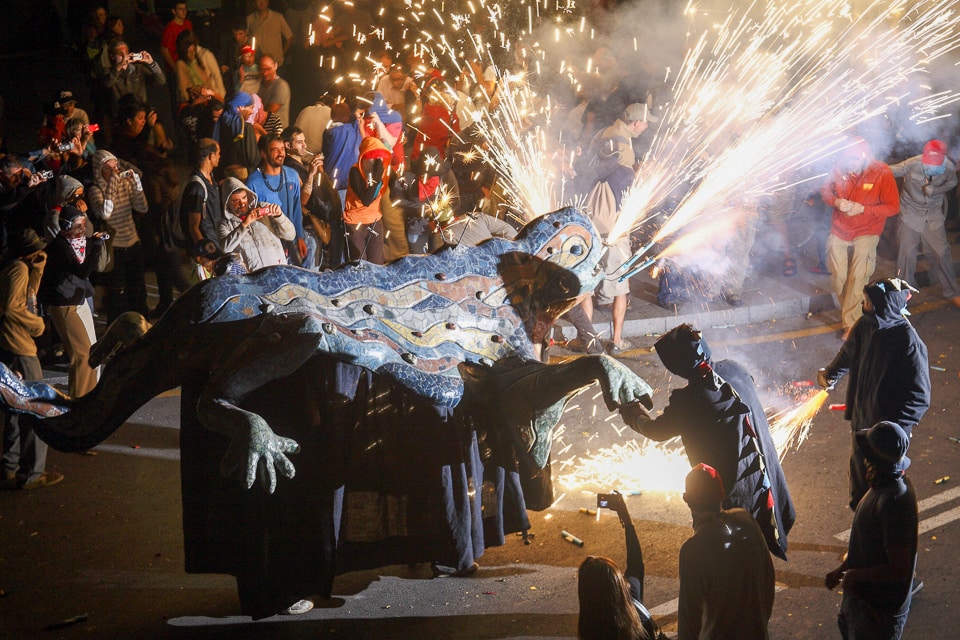
Fiestas de la Mercè
Barcelona
September 20-24, 2025
The festival of La Mercè, which is held in honor of the patron saint La Mercè (the Virgin of Mercy) is the main festival of Barcelona. Main attractions include:
The human towers of the castellers, as their builders are called. Performances take place at the Plaça de Sant Jaume in the Gothic Quarter, and the square is completely filled with thousands of people.
The procession of Correfoc – fire-breathing dragons – usually takes place on the Via Laietana at nightfall. Fire-breathing dragons, accompanied by dangerous devils and other monsters march the streets and scare the people with lots of fireworks and bangers. There is a more harmless Carrefoc for children taking place before the actual Carrefoc. If you go, wear clothes that will not be ruined by a few sparks. If you want to see the dragons at a close range, it is advisable to wear safety glasses.
The “Giant Parade” features huge figures of kings and queens, nobles and saints marching through the streets.
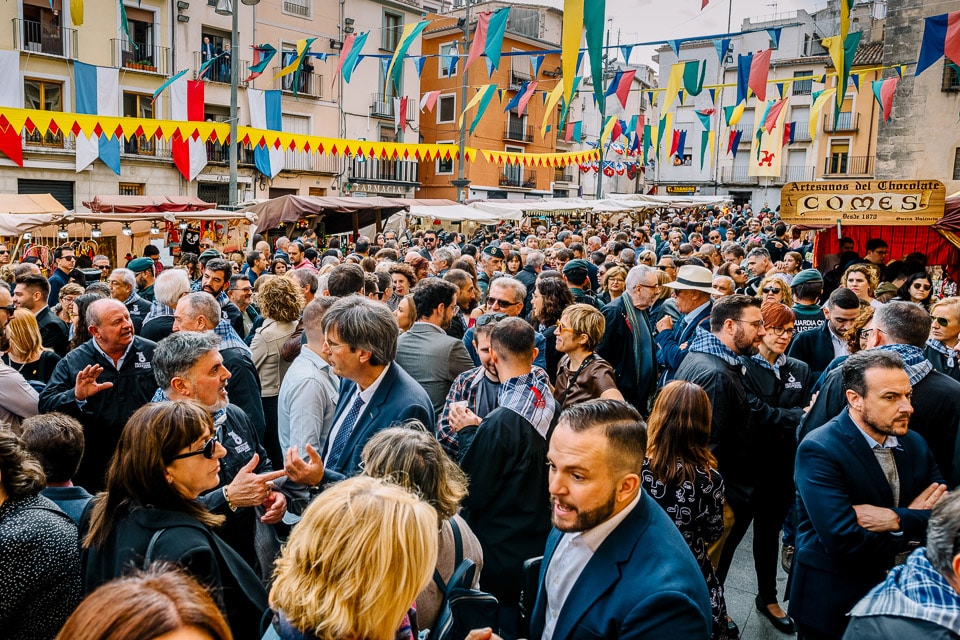
Fira de Tots Sants (All Saints’ Fair)
Cocentaina (near Alicante)
October 31-November 3, 2025
For more than 600 years, Cocentaina in Alicante (Region of Valencia) has hosted this agricultural and cattle fair which every year attracts over 350,000 people, making it one of the major festivals of Spain. It was first held in 1346 as a regional agricultural and cattle market. Today it has become established as a major showcase for traditional farming activities, crafts, farm machinery and means of automation. In addition it offers a wide range of cultural attractions, including outdoor markets, a book fair, exhibitions, choral contests, riding and dressage displays, concerts, and crafts workshops.
Up Your Travel Skills
Looking to book your next trip? Use these resources that are tried and tested by us. First, to get our best travel tips, sign up for our email newsletter. Then, be sure to start your reading with our Resources Page where we highlight all the great travel companies and products that we trust. Travel Accessories: Check out our list of all the accessories we carry to make getting there and being there a lot easier. Credit Cards: See our detailed post on how to choose the right travel rewards credit card for you. Flights: Start finding the very best flight deals by subscribing to Thrifty Traveler. Book your Hotel: Find the best prices on hotels with Booking.com. See all of the gear and books we like in one place on our Amazon shop.Got a comment on this post? Join the conversation on Facebook, Instagram, or Threads and share your thoughts!

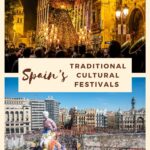
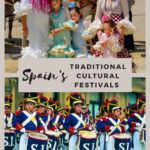

Comments are closed.